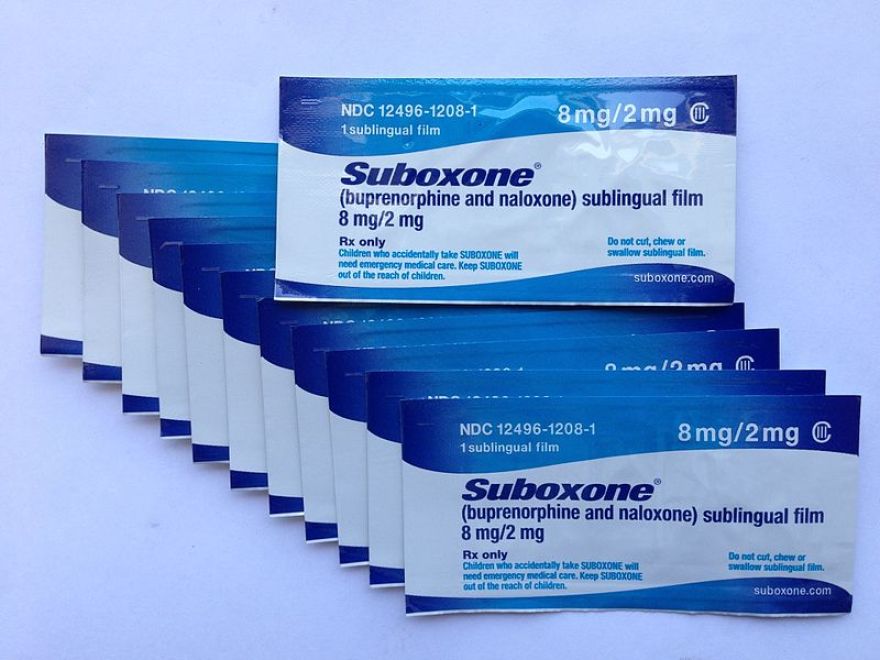Open 24/7
San Diego Suboxone
Recover from drug addiction today
Suboxone Doctors in San Diego
Are you addicted to opioids and struggling with withdrawal symptoms? Our Suboxone Doctors in San Diego can prescribe buprenorphine-naloxone as medication-assisted treatment for opioid use disorder.
Put an end to your struggle with opioid dependency and treat opioid addiction with medicine that is proven to work.
What is Suboxone?
Suboxone® (buprenorphine/naloxone) is among the most popular prescription medications used to treat dependence on opioid drugs. It comes in the form of a sublingual (or buccal) film that dissolves in your mouth.
Research shows that Suboxone can significantly reduce abuse and misuse of opioid drugs. Suboxone treatment has also shown to be effective in reducing opioid dependence.
Suboxone is available in four different strengths for varying levels of opioid dependence:
- 12 mg buprenorphine & 3 mg naloxone
- 8 mg buprenorphine & 2 mg naloxone
- 4 mg buprenorphine & 1 mg naloxone
- 2 mg buprenorphine & 0.5 mg naloxone
Generic formulations of buprenorphine and naloxone may also come in tablet forms and be just as effective.
How Does Suboxone Work?
Suboxone works through both of its active ingredients buprenorphine and naloxone. Both compounds serve different purposes, but when combined together they can be highly effective in reducing symptoms of opioid use disorder.
To understand how they work together, let’s first look at how they work as stand-alone treatments.
Buprenorphine
Buprenorphine is a partial opioid agonist. Opioids like heroin or codeine are full opioid agonists. So as you might imagine, buprenorphine can induce similar feelings such as euphoria or respiratory depression — though at much weaker levels.
As a standalone treatment, buprenorphine can help:
- Reduce physical dependence to opioids, including withdrawal symptoms
- Reduce mental dependence to opioids, reducing cravings
- Lower the potential more opioid misuse
- Increase safety in cases of opioid overdose
Because of buprenorphine’s binding affinity to opioid receptors, it can displace other opioids (such as heroin or morphine). And, its partial agonistic activity greatly lowers the risk of respiratory depression.
It is also effective in reducing stress-related drug-seeking behaviors due to its ability to block dynorphins — which drive anxiety, stress and are a large factor in relapse.
Naloxone
Naloxone is an opioid antagonist. This means that it attaches to opioid receptors and strips those receptors of other opioids with lower binding affinities (i.e. heroin, morphine, etc.).
This opioid-blocking property of Naloxone makes it extremely useful in the case of opioid overdoses. Thanks to California law AB 1535, Californians can purchase naloxone over-the-counter at any participating pharmacy. Brief in-store training must be completed before purchase.
Because naloxone blocks the effects of opioids, it can put the user into precipitated (immediate) withdrawals. The addition of buprenorphine in Suboxone makes precipitated withdrawal much less likely.
Naloxone is not a treatment for opioid use disorder, but its properties can be exceptionally useful when combined with buprenorphine.
Buprenorphine-Naloxone in Suboxone
As listed above, Suboxone is 4 parts buprenorphine and 1 part naloxone. They are paired together to create a medicine that is highly effective in opioid treatment.
Buprenorphine in itself can sometimes be used as a treatment for OUD, though its euphoric properties can lead to habit-forming. Buprenorphine is most commonly used as a temporary treatment, reducing the dosage over time — so these properties can be problematic.
The naloxone ingredients in Suboxone lower the likelihood of misuse and lessen the euphoric properties of buprenorphine.
Suboxone Safety & Side Effects
Suboxone can cause both mild and severe side effects, especially when misused. Your prescribing doctor will explain its intended use that may be unique to your condition.
For severe cases of opioid use disorder, Suboxone may be used in long-term treatment programs. Long-term use increased the chance of certain side effects.
Common side effects of Suboxone:
- Headache
- Anxiety
- Insomnia
- Nausea
- Constipation
- Burning tongue and/or redness in mouth
- Opioid withdrawal symptoms associated with opioid dependence
Severe side effects of Suboxone:
- Allergic reactions — causing issues with breathing, rashes, and/or swelling
- Abuse and dependence — especially with long-term use
- Respiratory issues (breathing) — when misused and overdosed
- Adrenal insufficiency — and reduced cortisol hormone levels causing a number of other issues
- Liver damage
- Severe withdrawal symptoms — due to naloxone in the case of misuse.
Long-term side effects of Suboxone:
- Abuse and dependence (hence withdrawal)
- Liver damage
- Hormone-related issues, including adrenal insufficiency
Please note this is not a complete list. Anyone prescribed Suboxone should read the official Suboxone Prescribing Information and Suboxone Medication Guide.
Suboxone may negatively react with medications including but not limited to benzodiazepines, serotonergics, barbiturates, anticonvulsants, anticholinergics, tramadol, amphetamines, gabapentin, St. John’s Wort, 5-HTP, Garcinia, L-tryptophan, grapefruit, and more.
Suboxone Treatment
Depending on the condition of the patient receiving Suboxone, individual treatment programs may vary.
Typically, Suboxone treatment goes through two stages:
- Induction — Suboxone is used in this initial stage to reduce withdrawal symptoms after opioid use has decreased or stopped entirely. This induction stage should only be used for those who are dependent on short-acting opioids such as heroin, fentanyl, codeine, morphine, hydromorphone, oxymorphone, and oxycodone.
- Maintenance — In the maintenance phase, suboxone will be given at a stable dose for weeks to months. In severe cases, the maintenance phase can last more than a year.
- Tapering — When the time is right, you and your doctor may decide to end treatment and taper down one’s dosage to zero. This slow decrease in dosage may take weeks or months. During this, you may experience withdrawal symptoms — especially if taken Suboxone long-term.
Find Your Suboxone Doctor in San Diego
If you feel that medication-assisted treatment of Suboxone for opioid use disorder may be right for you or a loved one, give San Diego Suboxone a call.
Our Suboxone Clinic has highly experienced doctors who are experts in their field. There’s no better place in the San Diego area for you to start your journey of a better life.
Call San Diego Suboxone today at 844-865-1949 for a free consultation.
What You Get
Start Your Healthier Life Today!
Suboxone Treatment Plan
Addiction free
low risk
scientifically proven
FAQ’S
What is an agonist/ antagonist?
- An agonist is a drug that activates receptors in the brain creating a biological response.
- An antagonist drug blocks opioids by attaching itself to the brain receptors without activating them.
What drugs are considered opioids?
- Morphine
- Methadone
- Buprenorphine
- Hydrocodone
- Oxycodin
Can I become addicted to Suboxone?
It is possible to become addicted to suboxone. It is a medication that uses an agonist opioid (buprenorphine) and can cause the user to become dependent on it. However, if it is taken as prescribed by a doctor then it is a safe and effective drug.
How long will I be on Suboxone?
There is no set time period for how long someone stays on suboxone. It is something that will be decided between you and your doctor. Some people take it for long periods, while others will only use it for a short time before being weaned off.
Should I take Suboxone if I am on other medications?
Like any prescribed medication suboxone can cause an interaction with certain drugs. Be sure to tell your doctor what other medication you are on before starting treatment with suboxone. Those who are taking suboxone should not take sleeping pills, narcotic painkillers, sedatives, or drink alcohol.
Join Now
Send your information or give us a call to get started
or



